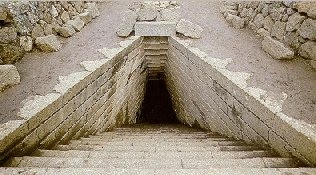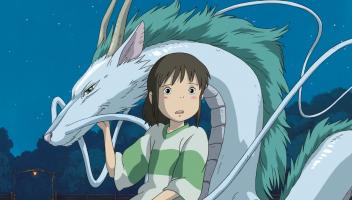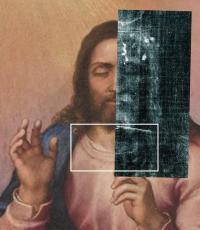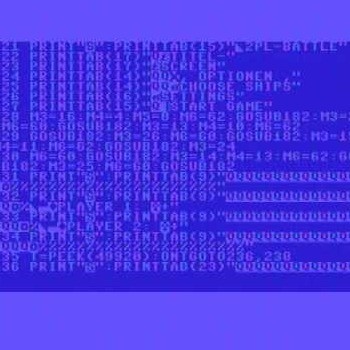Copy Link
Add to Bookmark
Report
The Space Between 03

From cclash@web.apc.orgWed Mar 6 12:41:46 1996
Date: Wed, 6 Mar 96 12:41:13 -0500 (EST)
From: "Jocelyn J. Paquette Bob Ewing" <cclash@web.apc.org>
To: ftp@etext.org
Cc: ideasz@tinored.cu
Subject: space between
sbsbsbsbsbsbsbsbsbsbsbsbsbsbsbsbsbsbsbsbsbsbsbsbsbsbsbsbsbsbsbsbsb
No. 3 sbsbsbsbsbsbsbsbsbsbsbsbsbsbsbsbsbsbsbsb Feb-March 1996 sbsb
sbsbsbsbsbsbsbsbsbsbsbsbsbsbsbsbsbsbsbsbsbsbsbsbsbsbsbsbsbsbsbsbsb
the space between
sbsbsbsbsbsbsbsbsbsbsbsbsbsbsbsbsbsbsbsbsbsbsbsbsbsbsbsbsbsbsbsbsb
sbsbsbsbsbsbsbsbsbsbsbsbsbsbsbsbsbsbsbsbsbsbsbsbsbsbsbsbsbsbsbsbsb
sbsb published six times per year sbsbsbsbsbsbsbsbsbs by sbsbsbsb
sbsbsb culture clash communications sbsbsbsbsbsbsbsbsbsbsbsbsbsbsb
sbsbsbsb cclash@web.apc.org sbsbsbsbsbsbsbsbsbsbsbsbsbsbsbsbsbsb
sbsbsbsbsbsbsbsbsbsbsbsbsbsbsbsbsbsbsbsbsbsbsbsbsbsbsbsbsbsbsbsbsb
The means are to the end as the seed is to the tree.
attributed to Ghandi.
by Bob Ewing
cclash@web.apc.org
THREE ARTISTS DISCUSS CYBERSPACE
The Internet, Cyberspace, perhaps the mid-1990s two most hyped
words. Claims and counterclaims circle the globe. The Internet is
a network of computer networks and cyberspace is where the
networking happens. I view cyberspace as a place of tremendous
potential that is only just beginning to be realized. For this
article I contacted a number of artists and asked if they would
comment on what cyberspace means to them. Three agreed. Their
words, which follow, are reproduced exactly as I downloaded them
from my email folder. If you have email access and want to talk
with the three artists who responded do it.
From: ideasz@tinored.cu (Banco de Ideas Z)
Reply-To: ideasz@tinored.cu
Subject: interview.1
To: cclash@web.apc.org
Well,I didn't know anything about cyberspace three years ago when a group
of friends began the cultural project Banco de Ideas Z. And anything about
computers neither. Some day I found an cuban american magazine with an
article about The email: a tool for the poor peoples.The email sound exciting
on the pages of the zine,but regarding that on this years the electronic
networks haven't any promotion here,I didn't discovered any practical
utility for this remote "device".
By casualty,I meet one guy who is specialist on the email system of the
Cuban Sciences Academy.He talked a lot about the email,and he gave us a
login and password.But on this time we didn't know what can we do with the
email,and resigned the use. Then,we discovered Internet and virtual reality,
and the dream of the unlimited communication invaded our heads.
Now,after August,we decided to begin to edit and transmit a weekly cultural
bulletin. At the beginning we used a pocket modem because we haven't our
own PC.With this kind of modem we can plug on many PC which belong to several
cultural institutions. Now,with our PC,we edit the bulletin,the only one in
Cuba dedicated to cultural matters and transmitted to 14 countries and stored
on Internet thanks to the solidarity of a collective from NY.
We made weekly four bulletins: one for international promotion of cuban
culture,and the others dedicated to foster here(between the cuban networks
users) some topics like gay and lesbian issues,AIDS cultural activism,
green education,Internet inside,practically unkown on Cuba.These materials
are extracted from several publications we get by barter.
The "international" bulletin contains art exhibitions catalogues,
commentaries,call for events and projects,information about cuban
institutions,visual arts,literature,theater,video reviews,etc. As the
cultural life here is so wide, we are now offering our knowledge to others
centres and projects in order to edit their own bulletins. And we will send
their materials to our usual readers.
We are wishing to jump to WWWeb. We need the software for making the pages,
so we will welcome every aid on this aspect.
--------
Date: Sat, 20 Jan 1996 23:07:01 -0500
From: MB29@aol.com
Message-ID: <960120230659_402342929@mail04.mail.aol.com>
To: cclash@web.apc.org
Subject: mail art cyberspace
Bob--E-mail has served me as a networking tool--a means of getting
information, principally, about mail art shows, fax art shows, and networking
news. It's been useful in the sense that it's helped me find out about a few
more opportunities to participate in shows than I would have had otherwise. I
also used e-mail and Internet postings to advertise a mail art show I was
organizing, and to advertise the opening of the show. I can't tell if it had
an effect, though. I haven't yet tackled issues of sending visual art by
e-mail or internet means, mostly because I don't have the equipment to do
that.
If you need to know any more, let me know.
Jeff Bagato
----------
abell@linfield.edu
Thanks Bob for reply. I work with e-mail mainly as a way to comunicate
with other artists worldwide on philosophical, content and other issues.
My other focus is the use of the fax machine to create interactive fax
art installations. My last project was in fall 1994 "Enter the Electronic
river" an installation at Renshaw Gallery, Linfield College. Interaction
was through the fax machine, some e-mail. We had over 110 artists from 20
countries and 6 continents, with 4 additional interactive projects that
developed from and with various participants. My next project will be in
September this year, also at the same venue. It is entitled "Balanced on
a point of equilibrium: techno-ambiance, megaliths and office machines"
and will address the question of obsolescence. It will again be an
international fax art installation directed by its participants. I will
be providing the physical setting of megaliths, boulders, a circles of
stones and fax machines which will receive/store/display images and texts
directed to the theme. Let me know if any of this is of further interest
to you. Perhaps some of the artists in your centre may be interested in
participating in the project which will be in September. Thanks so much.
Regards and greetings from Lilian A. Bell
Date: Tue, 23 Jan 1996 11:36:27 -0800 (PST)
From: Anthony Bell <abell@calvin.linfield.edu>
Subject: Re: artists and cyberspace
To: <cclash@web.apc.org>
As a cyber-neophyte I became interested in the interim technology of the
fax machine as a way of interacting in cyber space because of its ease of
use and access for those artists outside the western tech cultures. Many
of these colleagues find it difficult even to access a fax machine, let
alone have a modem and access to the web. What one can partake of in the
cyber arts depsends largely on ones cash, institutional affiliation and
technical know-how. Not every electronic artist has a modem, web access
or email address. Our present linkage to the telephone connection (as
well as some equipment incompatibility) also makes image transmission
slow and expensive.
The creative possibilities that draw me to the cyber medium include:
1. The possiblity of developing a philosophical and content based
aesthetic that somehow represents the essence of the cyber environment,
yet uses the simplest means possible- hardware and technique remain secondary
2. The desire to work in a space between "presence & absence" moving
between the real and the virtual through interactivity and transformation
3. The ability to focus on a worldwide aesthetic dialog within the
broadest cultural framework
4. The pursuit of a collective imagination to create boundary free works
of image/text by multiple authors. Douglas Coupland in his book
"Microserfs" notes that "this is the end of the age of authenticity,"
while Gyorgy Galantai of Artpool in Budapest, Hungary describes it as "a
mass produced uniqueness." Roy Ascott from the UK speaks of "a
conversation rather than a monologue."
As to how cyberspace can be used as an art medium, I can only speak of my
experiences with hybrid forms of tele-communication: we hijack hi-tech
office equipment to create spontaneous transmissions for a shared
consciousness and a new intellectual spirituality. The ability to alter
the axis, use the ripple effect of coincidence and insert subversive
ideas into the flow of image data results in a wonderful ambiance of
electronic energy that resonates through a cyber art project. Bruce
Breland, director of DAX-Digital Art Exchange feels that "the human
capacity for rapture is simultaneously a desire for fulfillment and an
invitation to anarchy."
Perhaps I can summarize these actions as follows:
1. artists in various global locations start the process as
"actors/spectators"--the abolition of time and place
2. The act of scanning occurs: digitizing electronic signals are the
medium. Recorded reality is re-arranged, distorted and improvised
3. Image flows converge to a collection site. Artists and art objects are
absent. The rawness of the visuals has the directness and freshness of
the present
4.Separate images become a living electronic reality created by multiple
minds
5. The fusion of near and far: form and content develop and visual
resonance is transmitted back into the digital stream of thought for
further transformations.
Thanks so much Bob. With best regards, Lilian A. Bell
couey@well.sf.ca.us
>A question: please tell me something about
>your work in cyberspace?
My work in cyberspace includes projects I've organized as art
works, and work for hire in which I focus on establishing cyber
territories for artists and other marginalized people. Both
types of work share similar goals; and in some ways I consider
it all art, though it might also be defined in socio-political
terms, or even just survival. The common thread is a commitment
to the idea of cyberspace as a mass participatory medium. My work
is predicated on the conception of communication structures as
organic sculptural media; and an aesthetic of use an action.
I came to cyberspace in 1985; at the time I was working with the
artists' organization, ART COM, and we had decided to publish
our art magazine on the WELL (Whole Earth 'Lectronic Link), a
conferencing system that was accessible through packet network
from 40 some countries. We were looking to cut production costs
and increase distribution. What we found instead was a revelation:
cyberspace was a many to many communications environment - a
radical shift from both the mass media and from the tradition
of fine art production. Another revelation was that we had
broken out of the experimental art ghetto - not many artists
had computers and modems at the time. ART COM, and a few
individual artists who were online at the time, began to
experiment with participatory art production. Our participants
did not define themselves as artists - rather they were
computer programmers, researchers, writers, radio talk show
hosts - a diverse range of people who just happened to be
interested and wealthy enough to buy the tools and explore
what this new world might mean.
My "art" work draws heavily from this experience: I organize
online environments that invite public participation, and seek
to cross over established communications barriers - particularly
those raised between different cultural groups and socio-economic
classes.
To give you a more specific idea about this work, a list
of projects & short descriptions follows:
Virtual Cultures, 1990
A 2-system open-participation panel organized to explore the
cultural applications of virtual reality, including computer
networks; and to provide access to the Cyberthon conference to
people who would otherwise be excluded.
Virtual Country, 1990
A 2-system project in which virtual countries were collectively
invented by everyone who responded.
Communications Across Borders, 1991
Organized to initiate an international movement for reciprocal
cultural communications via computer network, Communications
Across Borders invited participants to devise solutions to
unequitable network distribution as electronic sculpture.
CAB was designed for Reflux, an art telecommunication project
by Artur Matuck, in which a decentralized interchange of aesthetic
discourses are sent through (tele)communications networks.
Presented at the Sao Paulo Biennial.
Cultures in Cyberspace, 1992
An open-participation virtual panel organized to address the
impact of cyberspace on distinct cultural groups and vice versa.
Initiated locally on 5 systems, in collaboration with George
Baldwin, Anne Fallis, Randy Ross (American Indian
Telecommunications); Phillip Bannigan & Sue Harris (ArtsNet);
Judy Malloy & Eric S. Theise (The WELL), John Quarterman (USENET).
Created for the 3rd International Symposium on Electronic Art.
Imagining the Information Age, 1993
A project to broaden political discourse concerning the National
Information Infrastructure, so that it includes the realities of
lived experience, dreams, traditions, art and other modes of
perception usually excluded from national policy making. 4 nodes
create fictional Representatives who plan the future. Their
discussion is carried via email list, which also serves as a
document for the White House. Organized for Matrix: Women
Networking, an exhibition of online works by women artists
presented at Tomorrow's Realities, SIGGRAPH 93.
Imagining the Information Age: Stories/Visions, 1994-96
An online project to connect disparate realities in the same
city. 2 nodes, 1 at the ACM Multimedia Conference in San
Francisco's downtown business center, and 1 at the San
Francisco Digital Media Center, in the Mission district, a
low income, predominantly Latino neighborhood, added stories
and visions of the future to the same web site.
http://www.well.com/user/couey/here.html
The above projects have been organized as art events; I also
work with projects that seek to develop sustainable systems of
difference in cyberspace. These include: Arts Wire, an
communications system for artists and arts organizations - an
attempt to share information and build bridges across the
borders of race, medium, and institutional status; setting
up a web self publishing service for WELL users; training labor
activists to use the Internet; working with local community
networking projects.
Anna Couey
WWW SITES
http://netaccess.on.ca/~alone/acp.html
http://www.warhol.org/warhol
http://www.woodwind.com/ccafe
http://www.concourse.com/wwar/default.html
http://www.artnet.org/iamfree
http://www.cascade.net/kahlo.html
Collaborating artist email addresses:
ideasz@tinored.cu
abell@linfield.edu
MB29@aol.com
couey@well.sf.ca.us
THE JOYFUL NOISE
Ring a bell! Bang a gong! Pound a drum! On October 31, 1996
at 6:00pm eastern standard time join the Joyful Noise.
Once you have made your noise create a mail or email art piece to
commemorate your experience. Please limit size to 8x10 inches.
mail all work to Culture Clash Communications for exhibit
in mid-November 1996. Mailing address Culture Clash
Communications, Box 24046, 70 N. Court Street, Thunder
Bay, Ontario, Canada, P7A 8A9; email: cclash@web.acp.org. All
entries will be exhibited.
***********************************************************************
the space between is looking for poetry. keep it short and make it
dance. send submissions to cclash@web.apc.org



























